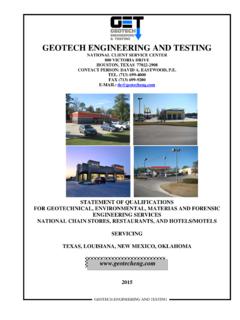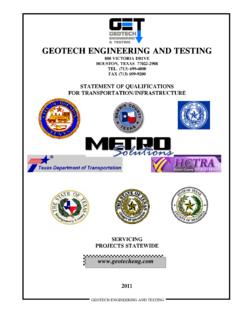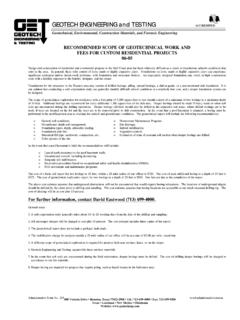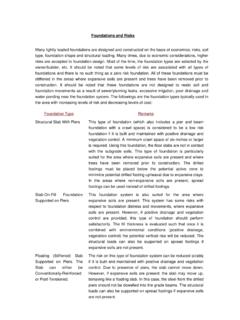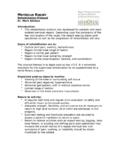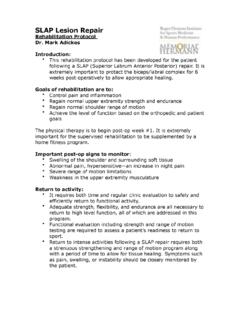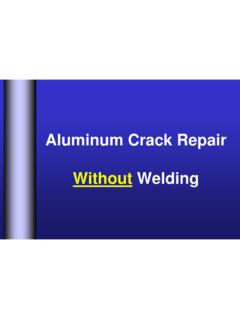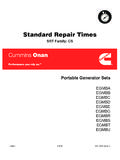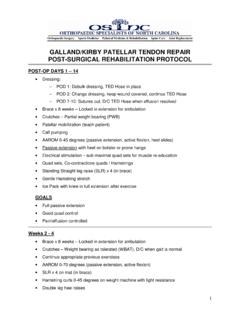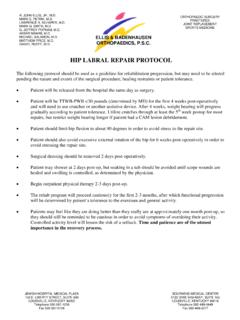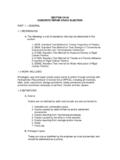Transcription of Master Repair Guidelines - Geotech Engineering …
1 Guidelines for the Evaluation and Repair of Residential Foundations Version 1. By the Texas Section American Society of Civil Engineers 2002 Texas Section American Society of Civil Engineers All rights under law, including copyright, are reserved. This document may not be downloaded, copied, altered, faxed, or converted to electronic media except by written permission or purchase from Texas Section ASCE. Additional copies may be obtained from Texas Section-ASCE on the Section website at Forward to Version 1. The Texas Section of the American Society of Civil Engineers (ASCE) adopted Guidelines for residential foundation Engineering on October 3, 2002, with an effective date of January 01, 2003.
2 The Section began this work in 1999. This effort grew out of the response of many Section members to the Policy Advisory issued by the Texas Board of Professional Engineers (TBPE) in 1998, which addressed residential foundation Engineering . Many ASCE practitioners expressed the opinion that technical Guidelines should more rightly be created by a technical society such as ASCE rather than by the TBPE. One goal of the Guidelines has been to provide the TBPE with guidance in their evaluation of complaints brought against engineers practicing residential foundation Engineering . The committees were composed entirely of ASCE members who were licensed engineers. The dollar value of the professional services donated to the effort is conservatively estimated to exceed $1,000,000.
3 The Guidelines are not intended to be Standards, but are Guidelines only, reflecting the Engineering opinions and practices of the committee members. They in no way replace the basic need for good Engineering judgment based on appropriate education, experience, wisdom, and ethics in any particular Engineering application. Thus, they are primarily suited as an aid for and use by engineers. Members of the Foundation Evaluation and Repair Subcommittee: Robert F. Pierry, Jr., PE, Chair Marshall B. Addison, PhD, PE Laura Campa, PE Philip G. King, PE. Alberto Arroyo, PhD, PE Jim W. Crawford, Jr., PE Kirby T. Meyer, PE. Gardner D. Atkinson, Jr., PhD, PE John W. Dougherty, PE Gary A. Osborne, PE.
4 David A. Belcher, PE Donald N. Garner, PE Kenneth M. Struzyk, PE. Robert E. Bigham, PE Sarah Hancock-Gamez, PE Daniel T. Williams, PE. John T. Bryant, PE. Members of the Residential Foundation Oversight Committee: Ottis Foster, PE, Chair James G. Bierschwale, PE Philip G. King, PE Robert F. Pierry, Jr., PE. Dick Birdwell, PE Richard W. Kistner, PE Douglas S. Porter, Jr., PE. Edmundo R. Gonzalez, PE Jerald W. Kunkel, PE John T. Wall, PE. Richard C. Hale, PE Steven R. Neely, PE William T. Witherspoon, PE. Table of Contents Section 1. PURPOSE AND SCOPE ..1. Background ..1. Limitation ..2. Adopted Section 2. QUALIFICATIONS OF THE ENGINEER ..3. Professional Qualifications ..3. Professional Ethics.
5 3. Section 3. LEVELS OF Section 4. EVALUATION Analysis ..6. Section 5. EVALUATION CRITERIA ..7. Structural Integrity ..7. Performance ..8. Deflection and Overall Deflection ..8. Localized Deflection ..9. Remediation Section 6. REPORTING ..11. Section 7. REMEDIAL MEASURES ..12. Objectives and Limitations of the Remedial Measures ..12. Responsibility of the Engineer ..12. Non-structural Remedial Measures ..12. Structural Remedial Measures ..14. Repair of Pier and Beam Post Lift Plumbing Floor Compliance Letter ..17. Guidelines for the Evaluation and Repair of Residential Foundations Version 1. By the Texas Section of the American Society of Civil Engineers Section 1. PURPOSE AND SCOPE.
6 Introduction The purpose of this document is to provide guidance for engineers practicing in the field of residential foundation evaluation and Repair within the State of Texas with the goal of protecting the public when obtaining these services. The principal items discussed in this document are as follows: 1. An introduction presenting the background leading to the need for this document 2. Qualifications of engineers performing evaluations or Repair designs 3. Scope of services 4. Methodology 5. Information typically presented in the evaluation report 6. Performance criteria for residential foundations 7. Foundation Repair and remedial alternatives 8. Anticipated structure performance after remedial measures Background Texas has large areas with clayey soils that shrink and swell with changes in soil moisture content.
7 This shrinking and swelling may cause movement of residential foundations that adversely affects the residence. Other factors may influence foundation performance. Some of these factors are inadequate design or construction, unanticipated loads, deterioration of materials, compressibility of the supporting soils, landscaping practices, leaking plumbing, and slope instability. The American Society of Civil Engineers, Texas Section (ASCE, TX) developed this document as a guideline for evaluation and Repair of residential foundations. A separate document, Recommended Practice for the Design of Residential Foundations, also developed by ASCE, TX, addresses residential foundation design. Objectives The most common purpose of an Engineering evaluation of a residential foundation is to assess its performance.
8 This involves observation and evaluation of cosmetic (non- structural) distress and structural damage. The evaluation may also provide opinions of probable causes of distress or damage, assessment of risk of further damage, - 1 of 17 - Guidelines for the Evaluation and Repair of Residential Foundations Version 1. recommendations for remedial measures, and cost estimates. If the evaluation determines that remedial measures are appropriate, the engineer may be asked to provide the design and construction documents. Limitation These Guidelines have been developed by experienced professional engineers and presents practices they commonly employ to help deal effectively with soil conditions that historically have created problems for residential foundations in Texas.
9 These Guidelines presume the existence of certain standard conditions when, in fact, the combination of variables associated with any given project always is unique. Experienced Engineering judgment is required to develop and implement a scope of service best suited to the variables involved. For that reason, the developers of this document have made an effort to make the document flexible. Thus, successful application of this document requires experienced Engineering judgment; merely following the Guidelines may not achieve a satisfactory result. Unless adherence to this document is made mandatory through force of law or by contractual reference, adherence to it shall be deemed voluntary.
10 This document does not, of itself, comprise the standard of care which engineers are required to uphold. Adopted Changes The Texas Section of the American Society of Civil Engineers (ASCE) has adopted procedures for changing the Guidelines . In general, those interested in submitting changes for consideration by the Section should access the website at , and follow the instructions for submitting changes. Changes may also be submitted in writing to the Texas Section - ASCE, 3501 Manor Road, Austin, 78723, phone , fax Anonymous changes will not be considered. Those submitting changes should include contact information, state why a change is proposed, include applicable calculations if appropriate, and provide alternative language to incorporate the change.
